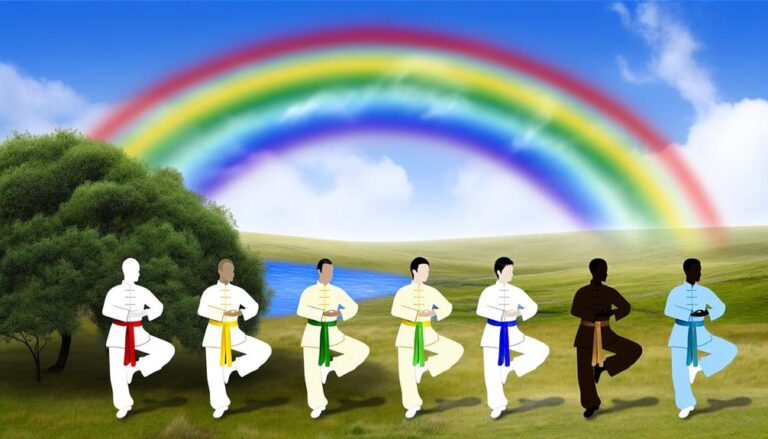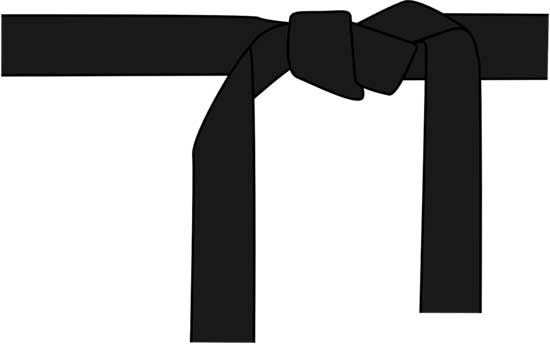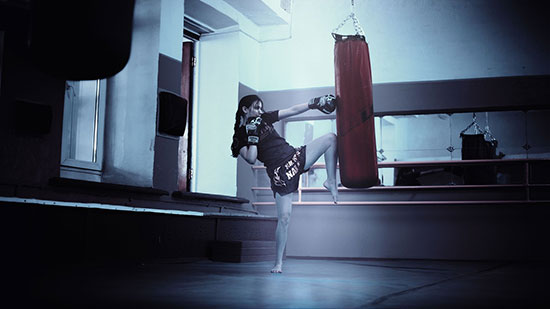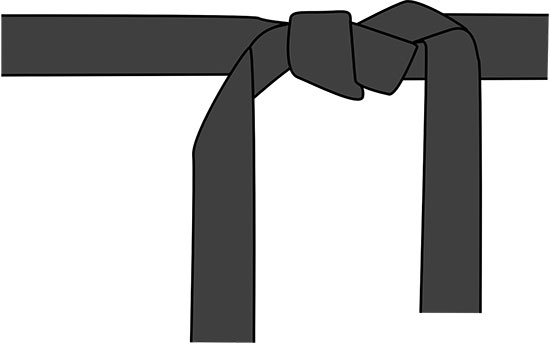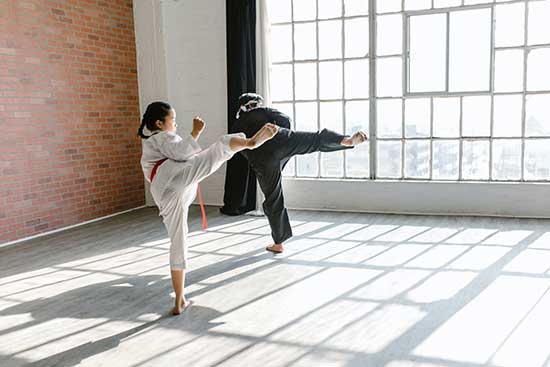Wado-Ryu and Kyokushin are karate styles that have roots in traditional Japanese martial arts and have gained widespread popularity worldwide.
Both styles of karate are effective for self-defense and personal development. They offer a challenging physical workout and can help to improve strength, endurance, and flexibility.
Wado-Ryu is a karate style founded by Hironori Ohtsuka in the 1930s. It is characterized by its emphasis on fluid, circular movements and using the body’s natural momentum to execute techniques.
Wado-Ryu practitioners also emphasize the importance of proper posture, balance, and the use of natural body movements in self-defense.
The style incorporates elements of judo and jujutsu, and practitioners often train in traditional Japanese weapons, such as the bo and the nunchaku.
Wado-Ryu is one of the four major styles of karate recognized by the Japan Karate Association, and students of all ages around the world practice it.
Kyokushin is a style of karate that Masutatsu Oyama founded in the 1950s. It is known for its emphasis on full-contact sparring and rigorous physical training, and it is often referred to as “the strongest karate.”
Kyokushin practitioners are trained to deliver powerful strikes with their fists, elbows, knees, and shins and to withstand significant amounts of physical punishment.
The style also incorporates elements of judo and traditional Japanese martial arts, and practitioners often train in traditional weapons, such as the bo and the nunchaku.
Kyokushin is one of the world’s most popular and widely practiced styles of karate, and the International Karate Organization recognizes it.
Contents
Differences between Wado Ryu vs. Kyokushin
Even though the two karate styles have similar originality and use similar weapons during training, there are a few key differences between the karate styles:
Training methods
Wado-Ryu emphasizes using circular movements and natural body momentum in self-defense. In contrast, Kyokushin strongly emphasizes full-contact sparring and physical conditioning.
In addition, Wado-Ryu practitioners emphasize proper posture and balance, while Kyokushin practitioners focus on developing powerful strikes.
Self-defense techniques
Wado-Ryu incorporates elements of judo and jujutsu into its techniques, while Kyokushin incorporates elements of traditional Japanese martial arts, such as kendo and sumo.
Wado-Ryu practitioners emphasize using traditional Japanese weapons, such as the bo and nunchaku.
Wado-Ryu practitioners typically participate in point-based sparring competitions, while Kyokushin practitioners are known for their participation in full-contact knockdown tournaments
Similarities
- Although the karate styles have differences, they also have similarities. The following are the similarities between the two karate styles.
- Ryu and Kyokushin styles are derived from traditional Japanese martial arts and incorporate elements of other disciplines, such as judo and jujutsu.
- They all emphasize proper posture, balance, and using natural body movements in self-defense.
- Both styles emphasize the importance of discipline, respect, and self-improvement during and after the training.
- Wado Ryu and Kyokushin are practiced by students of all ages worldwide and are recognized internationally.
- The two styles train practitioners to use traditional Japanese weapons, such as the bo and the nunchaku.
What to expect from these two types of martial arts?
What to expect from Wado-Ryu or Kyokushin karate depends on personal goals and choice of karate style, as the two styles have different expectations. For instance, if you choose Wado-Ryu, you will expect;
- A focus on fluid, circular movements and the use of natural body momentum
- An emphasis on proper posture, balance, and the use of natural body movements in self-defense
- Training in traditional Japanese weapons, such as the bo (staff) and the nunchaku
- The opportunity to participate in point-based sparring competitions
- A strong emphasis on discipline, respect, and self-improvement
Moreover, if you choose Kyokushin, you expect the following:
- A focus on full-contact sparring and rigorous physical conditioning
- An emphasis on powerful strikes with the fists, elbows, knees, and shins
- Training in traditional Japanese weapons, such as the bo (staff) and the nunchaku
- The opportunity to participate in full-contact knockdown tournaments
- A strong emphasis on discipline, respect, and self-improvement
- Take away
Wado-Ryu and Kyokushin karate styles are Japanese martial arts that emphasize proper posture, balance, and using natural body movements in self-defense.
The two styles are almost similar as they practice using weapons and body movements for self-defense.
Both styles of karate can be highly effective for self-defense and personal development. They offer a challenging physical workout and can help to improve strength, endurance, and flexibility.
Training in either style also involves learning and practicing various techniques, such as punches, kicks, strikes, and blocks, and practicing kata (pre-arranged sequences of techniques).
Both styles also emphasize discipline, respect, and self-improvement, and training in either style can be a rewarding experience.
The styles are not associated with many risks, thus, are recommended. The expectations for a practitioner depending on the type of karate style.
